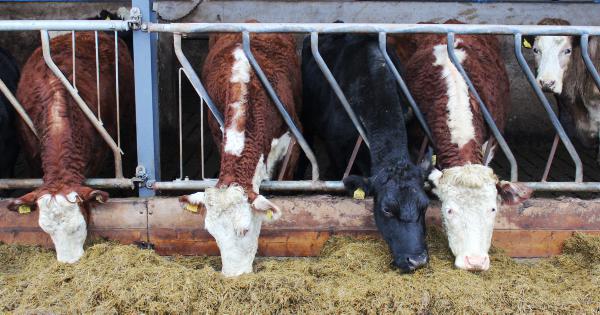After an excellent grazing year, spring cows are generally in good condition as they are housed for winter. However, where cows are now being housed, they will start to lose condition if they are not fed correctly.
Body condition score (BCS) influences fertility by determining how quickly the cow resumes oestrus activity (cycling) after calving. Target condition scores for spring-calving suckler cows are outlined in Figure 1. Spring- and autumn-calving cows should be housed in BCS 3.0.
Thin cows (BCS 2 or lower) and first-calved heifers that have been poorly managed often take up to 80 or 100 days before they come back into heat. The target should be 30 days after calving to have a realistic chance of achieving a 365-day calving interval.
Fat cows will also have poor fertility as there is also reduced oestrus activity. Over-fat cows (BCS 4+) are likely to experience calving difficulties, which again delays cows coming back into heat. Ideally, cows should be separated into three groups at housing: thin cows below BCS 2, ideal cows (2.5 to 3.0) and fat cows (BCS 3.5+). Once cows have BCS corrected, they can be regrouped and fed one diet.
Feeding to decrease body condition
In spring-calving herds, cows with excess condition will be more of a problem this winter. The reduction of body condition should be carried out at a similar rate to gaining condition to prevent metabolic problems.
Therefore, cows should be reduced by 1 BCS score over a 10-week period and this should be carried out during mid-gestation. Spring-calving cows will have a greater energy requirement for foetal development in late gestation. Therefore, they should be eating to appetite rather than being restricted. Restricting silage in late gestation can also delay cows coming back into heat.
Restricting silage intakes by 10% to 25% (5kg to 10kg fresh weight) depending on quality will reduce body condition at the desired rate. Cows should only be restricted if there is sufficient feeding space available. If not, over-fat cows should be housed separately.
If over-fat cows (BCS 3.5+) are not separated based on body condition, the dominant cow will eat to appetite with shy feeders not receiving enough forage. Feeding straw through a diet feeder daily or offering cows straw only (and minerals) every third day can help to ensure cows are being restricted in silage intakes. Straw will provide gut fill that will help to reduce silage intakes. Alternatively, dilute higher-quality silage with lower quality 62 to 64 DMD silage.
Feed guideline
A 650kg spring-calving cow will consume about 40-45kg of silage on a daily basis if fed to appetite. Where the cow needs to lose condition, on forage that is 70 DMD or higher, restrict silage intakes by 25% or 10kg/head/day on a freshweight basis.
With average silage at 65 to 69 DMD, reduce silage intakes by 10% or 4kg/head/day. Silage with 62 to 64 DMD should be fed to appetite.
Feeding to increase or maintain
Cows below BCS 2.5 need to gain condition. Increasing body condition by one condition point is the equivalent of gaining 70kg of liveweight. As before, gaining condition should be gradually carried out over a 70- to 80-day period and in mid-gestation.
Overloading the diet with high- energy concentrates or forage in the final month of pregnancy will result in the cow depositing fat in the birth canal. As a result, these cows will have severe calving difficulty and the blame will most likely be placed on the stock bull rather than the herd manager.
For a dry spring-calving cow, silage will make up the bulk of the diet. For the dry cow to gain condition on a forage-only diet, silage quality should be a minimum 68 DMD. At this level, silage should be fed ad-lib. Autumn cows will need 2kg of meal supplemented with 68DMD silage to gain condition.
Silage with 64 to 67 DMD will only maintain body condition in dry spring-calving cows. Therefore, offer 1kg to 1.5kg/day of concentrates until cows reach the correct BCS and then cease meal feeding. For autumn-calving cows, increase meal levels to 3kg/day
Silage quality below 64 DMD will require higher meal levels of 3kg as this silage is likely to have a high fibre content, which limits forage intake. For autumn cows, increase to 4kg/day.






 This is a subscriber-only article
This is a subscriber-only article











SHARING OPTIONS: